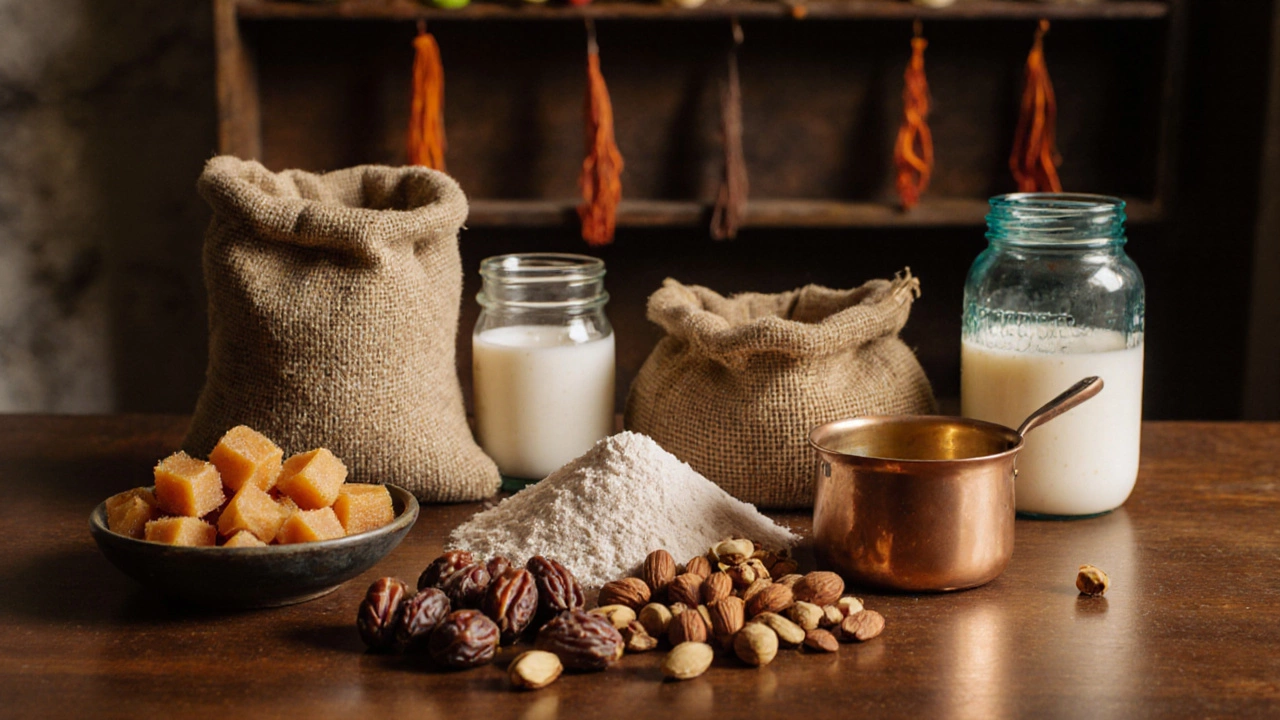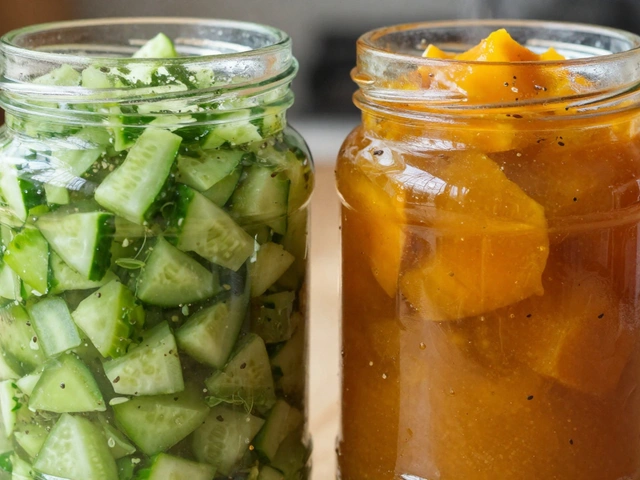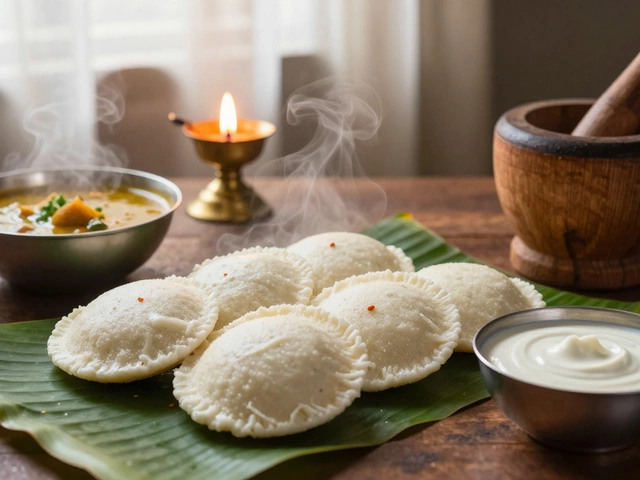Indian Sweet Nutrition Calculator
Choose Your Sweet
Nutrition Estimate
When you crave something sweet but don’t want to wreck your diet, the answer isn’t to skip Indian desserts altogether - it’s to pick the right ones. Below we break down which Indian sweets score high on nutrition, why they’re healthier, and how you can make them at home without sacrificing flavor.
What makes an Indian sweet "healthy"?
Before diving into the list, let’s set the yardsticks. A sweet can be called healthy when it meets most of these criteria:
- Low added sugar - natural sweeteners like jaggery, dates or coconut sugar replace refined white sugar.
- Rich in protein or fiber - beans, lentils, nuts, whole grains.
- Contains healthy fats from nuts, seeds, or ghee in moderation.
- Uses whole‑food ingredients - no artificial preservatives.
- Provides micronutrients (iron, calcium, magnesium) that regular desserts lack.
Keep these points in mind while you scroll through the next section; each sweet listed ticks most of these boxes.
Top 6 Health‑Focused Indian Sweets
Below are six sweets that are not only delicious but also pack a nutritional punch. For each, you’ll find a quick nutrition snapshot, the star ingredient, and a simple recipe tip.
1. Ragi Laddu (Finger Millet Energy Balls)
Ragi (finger millet) is a calcium‑rich grain that gives these laddus a nutty flavor and a solid fiber boost. Sweetened with jaggery, they keep the glycemic impact low.
- Calories: ~120 per laddu (30 g)
- Key nutrients: 12 g protein, 3 g fiber, 150 mg calcium
- Why it’s healthy: Low‑GI grain, no refined sugar, and the ghee is limited to a tablespoon for binding.
Quick tip: Roast the ragi flour until fragrant, then mix with warm jaggery syrup, a dash of cardamom, and roasted peanuts for extra crunch.
2. Besan Ladoo with Almonds
Besan (gram flour) is high in protein and fiber. When paired with almonds and a drizzle of honey instead of a lot of ghee, the result is a satisfying bite that balances sweet and nutty.
- Calories: ~130 per ladoo (25 g)
- Key nutrients: 5 g protein, 2 g fiber, 3 g healthy fats
- Why it’s healthy: Plant‑based protein, lower saturated fat, and almonds add vitamin E and magnesium.
Quick tip: Use 1 tbsp of ghee and replace half the sweetener with a teaspoon of honey for a lighter texture.
3. Date & Coconut Halwa
Dates bring natural sweetness and potassium, while shredded coconut supplies medium‑chain triglycerides that are easier for the body to burn.
- Calories: ~140 per serving (½ cup)
- Key nutrients: 2 g protein, 4 g fiber, 5 g healthy fats
- Why it’s healthy: No refined sugar, high potassium, and the coconut adds a good dose of lauric acid.
Quick tip: Soak dates, blend into a paste, then sauté with coconut oil, a pinch of saffron, and a splash of low‑fat milk.
4. Makhana Kheer (Fox Nut Rice Pudding)
Makhana (fox nuts) are low‑calorie, gluten‑free, and rich in antioxidants. Swapped with rice, they cut carbs while still delivering a creamy dessert.
- Calories: ~110 per cup
- Key nutrients: 3 g protein, 2 g fiber, 0.5 g fat
- Why it’s healthy: Lower carbs than rice, high in magnesium, and the use of skim milk reduces saturated fat.
Quick tip: Roast makhana until crisp, then simmer with skim milk, a pinch of cardamom, and a teaspoon of stevia or jaggery for light sweetness.
5. Kesar Pista Phirni (Saffron Pistachio Rice Pudding)
Phirni traditionally uses rice flour, but swapping half the rice flour with almond flour and using pistachios raises the protein content. Saffron adds antioxidants without extra sugar.
- Calories: ~130 per half‑cup
- Key nutrients: 4 g protein, 1 g fiber, 6 g healthy fats (from pistachios)
- Why it’s healthy: Nuts add healthy fats, almond flour lowers the glycemic index, and the portion size keeps calories in check.
Quick tip: Use low‑fat milk, sweeten with a blend of jaggery and a touch of erythritol, and garnish with a sprinkle of crushed pistachios.
6. Sweet Potato Payasam
Sweet potato is a complex‑carb powerhouse rich in beta‑carotene. When turned into a creamy payasam with a splash of coconut milk, it satisfies sweet cravings while delivering vitamins A and C.
- Calories: ~115 per serving (¾ cup)
- Key nutrients: 2 g protein, 3 g fiber, 5 g vitamins A & C
- Why it’s healthy: Low glycemic load, high micronutrient density, and the coconut milk provides good fats.
Quick tip: Boil diced sweet potato, mash, then simmer with coconut milk, a pinch of cardamom, and a drizzle of maple syrup for a delicate sweetness.
Quick Comparison Table
| Sweet | Key Natural Sweetener | Protein (g) | Fiber (g) | Calories per Serving | Top Health Benefit |
|---|---|---|---|---|---|
| Ragi Laddu | Jaggery | 12 | 3 | 120 | Calcium‑rich, low‑GI grain |
| Besan Ladoo | Honey + Jaggery | 5 | 2 | 130 | Plant protein & Vitamin E |
| Date & Coconut Halwa | Dates | 2 | 4 | 140 | Potassium & medium‑chain fats |
| Makhana Kheer | Jaggery (optional) | 3 | 2 | 110 | Low‑carb, antioxidant‑rich |
| Kesar Pista Phirni | Jaggery + erythritol | 4 | 1 | 130 | Healthy fats & saffron antioxidants |
| Sweet Potato Payasam | Maple Syrup | 2 | 3 | 115 | Vitamin A & C boost |
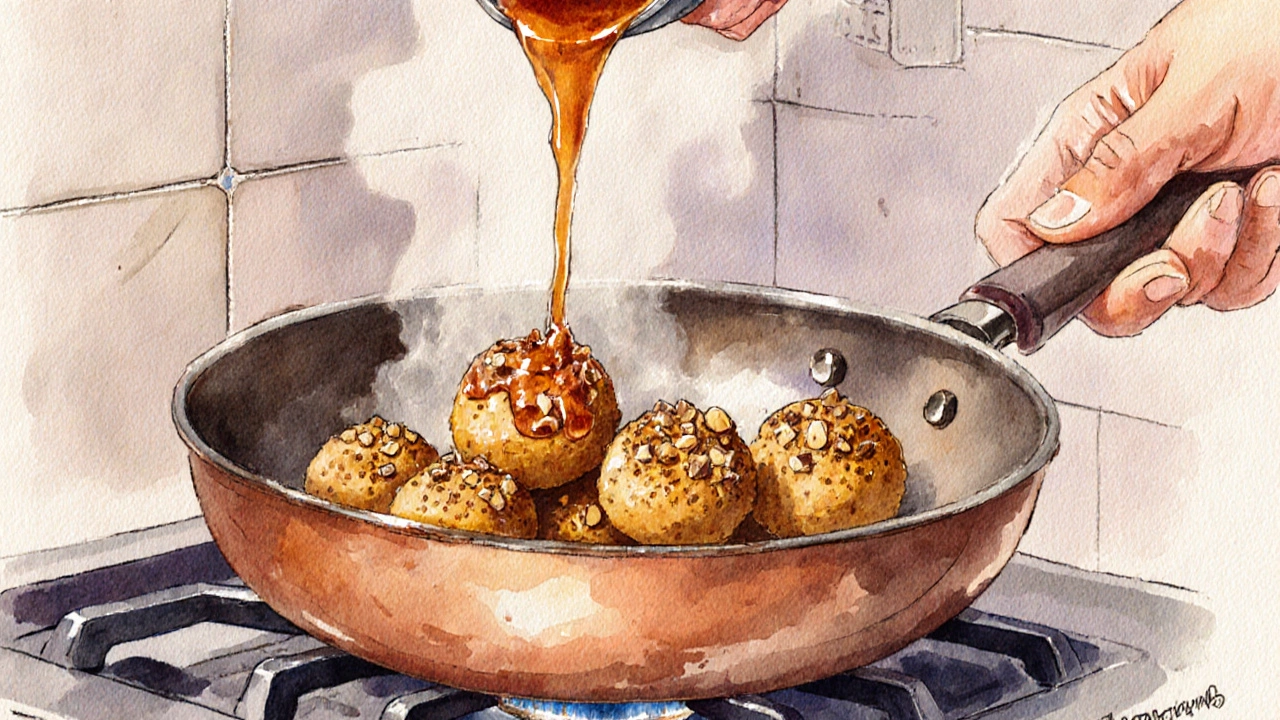
How to Make Any Indian Sweet Healthier
Even if you love a traditional recipe, small swaps can turn it into a smarter choice.
- Replace refined sugar. Use jaggery, dates, honey, or natural low‑calorie sweeteners like stevia.
- Boost protein. Add roasted chickpea flour, almond meal, or a scoop of whey isolate to the batter.
- Increase fiber. Incorporate whole‑grain flours (ragi, bajra), ground flaxseed, or shredded coconut.
- Cut saturated fat. Swap half the ghee with a splash of cold‑pressed sesame or coconut oil, or use low‑fat dairy.
- Portion control. Shape sweets into bite‑size balls (15‑20 g) and store in small containers.
These five adjustments work for most desserts, from gulab jamun to carrot halwa.
Common Pitfalls & How to Avoid Them
- Over‑sweetening. Tasting the jaggery syrup before adding it prevents accidental oversugar.
- Ignoring calorie density. Nuts are nutritious but high in calories; measure them carefully.
- Skipping roasting. Properly roasting flours and nuts releases flavors and reduces the need for extra sweetener.
- Using full‑fat milk. Switch to skim or plant‑based milks for a lighter texture without sacrificing creaminess.
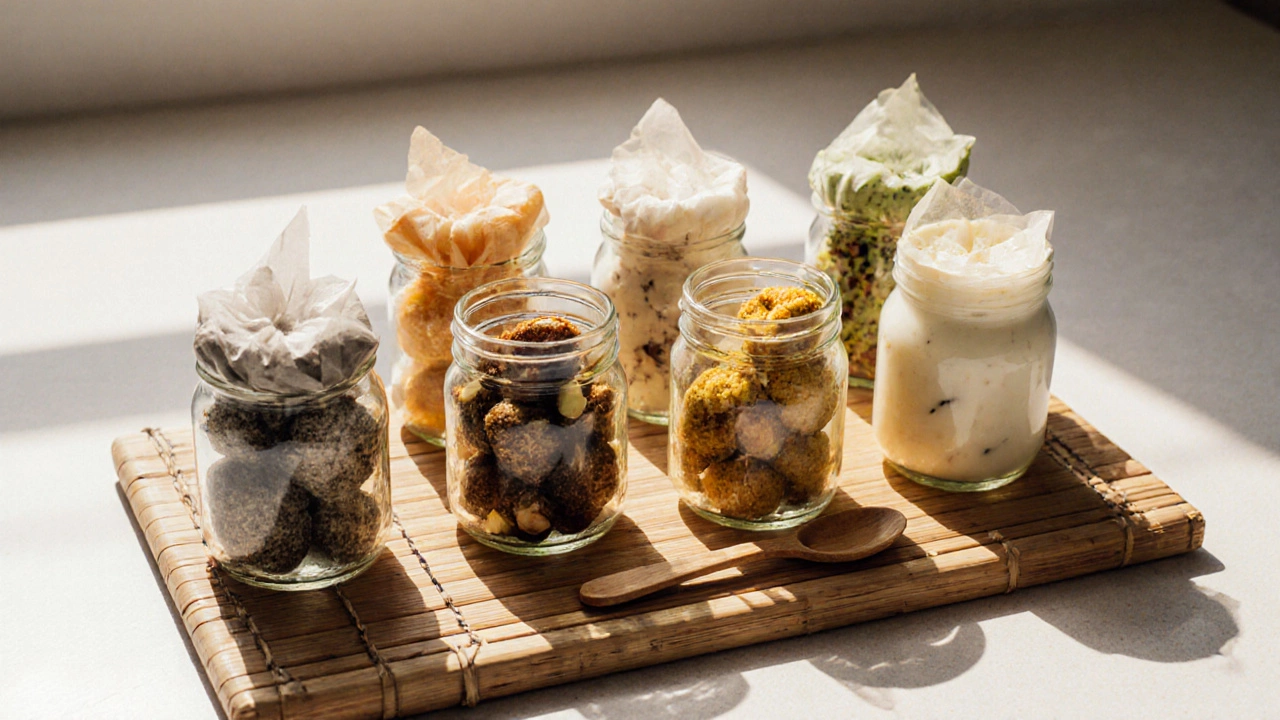
Snack‑Ready Packs: Storing Your Healthy Sweets
Freshness matters. Here’s a quick guide:
- Keep laddus and ladoos in airtight containers; they stay good for 10‑12 days at room temperature.
- Halwa and kheer last 5‑7 days in the fridge; reheat gently before serving.
- Freeze surplus (especially makhana kheer) in zip‑lock bags for up to 2 months; thaw overnight in the fridge.
Label each pack with the date - you’ll always know what’s safe to eat.
Frequently Asked Questions
Can I enjoy these sweets on a weight‑loss diet?
Yes, as long as you treat them as treats and stick to the suggested serving sizes. The higher protein and fiber keep you fuller longer, which can help curb cravings.
Are jaggery‑sweetened desserts safe for diabetics?
Jaggery has a lower glycemic index than refined sugar, but it’s still carbohydrate‑dense. Diabetics should count it toward their daily carbs and may prefer stevia or a small amount of dates instead.
What’s the best way to make sweets gluten‑free?
Swap wheat‑based flours with millet, sorghum, or chickpea flour. Most of the recipes above already use gluten‑free bases like ragi, besan, or makhana.
Can I freeze any of these sweets?
Makhana kheer, date halwa, and ragi laddus freeze well. Just wrap tightly and thaw in the fridge; reheat gently to restore texture.
How do I reduce the fat content without losing flavor?
Cut the amount of ghee by half and replace the rest with a light oil (like avocado or cold‑pressed sesame). Adding a splash of vanilla or extra spices compensates for any flavor loss.
Whether you’re watching calories, managing blood sugar, or just want a smarter snack, Indian sweets can fit into a balanced diet. Pick one of the options above, follow the simple swaps, and you’ll enjoy the same festive flavors without the guilt.
